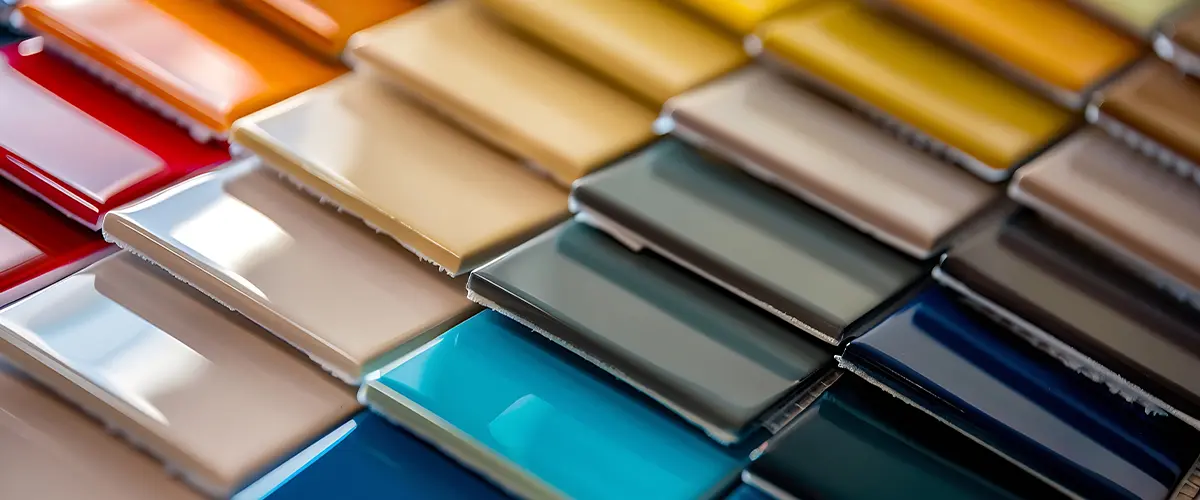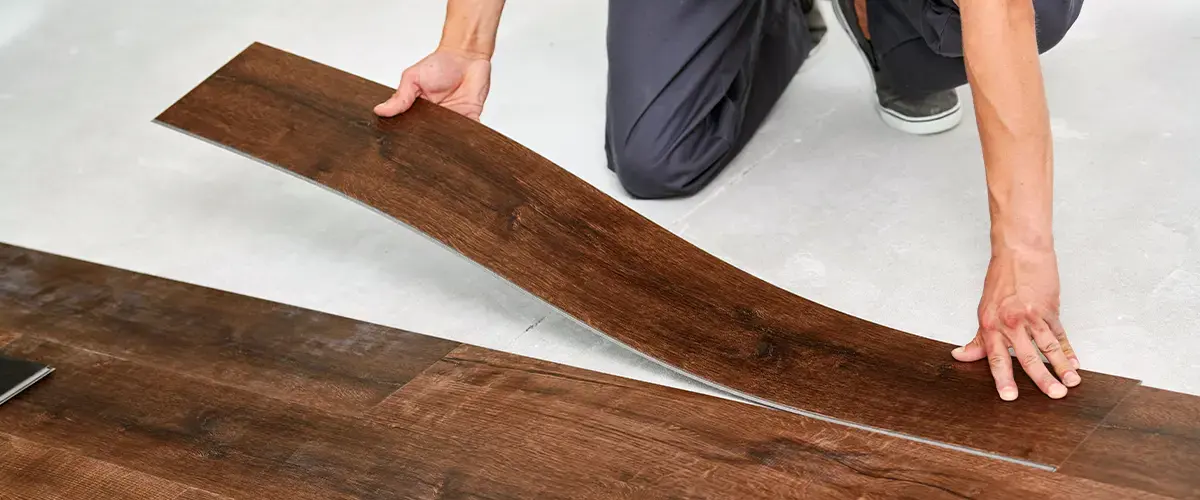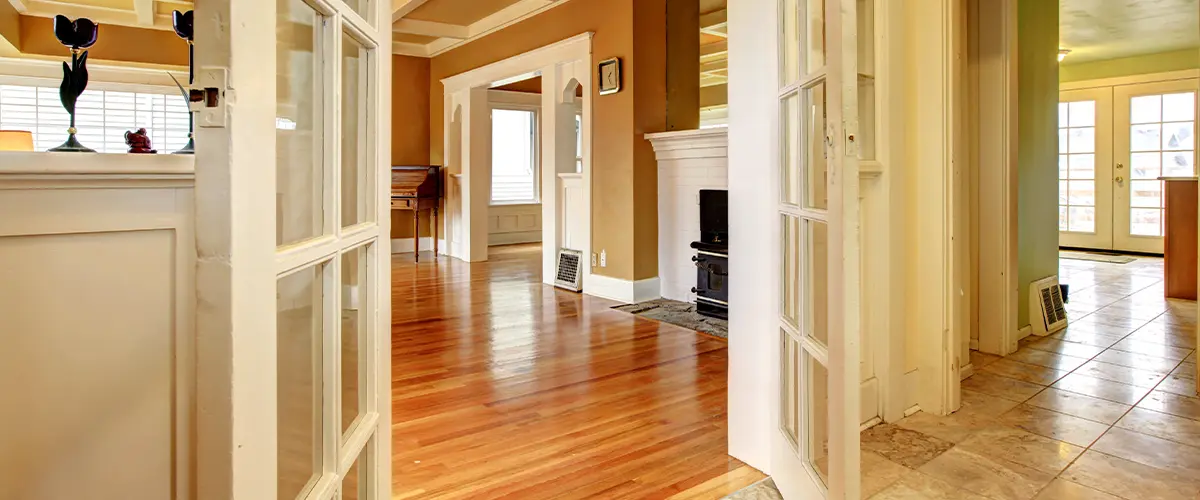Porcelain Tile vs. Vinyl Plank: The Ultimate Flooring Showdown
Today, we’re diving into the great debate: porcelain tile vs. vinyl plank. Both are superstars in the flooring world, but which one is right for you? Let’s break it down and help you make the best choice for your home.

The Basics: What Are They?
Porcelain Tile: These are made from refined clay and fired at high temperatures. They’re known for their durability, water resistance, and classic look. You’ve probably seen them in bathrooms and kitchens, but they’re versatile enough for any room.
Vinyl Plank: This is a type of luxury vinyl flooring designed to mimic the look of hardwood. It’s made from multiple layers, including a durable wear layer and a realistic printed design. Vinyl plank is praised for its affordability, ease of installation, and water resistance.
| Feature | Porcelain Tile | Vinyl Plank |
|---|---|---|
| Durability |
Pros: Extremely durable, ideal for high-traffic areas. Cons: Can crack if heavy objects are dropped on it. |
Pros: Generally durable, but can be scratched or dented. Cons: Less resistant to heavy impacts compared to tile. |
| Water Resistance |
Pros: Highly water-resistant, great for wet areas like bathrooms and kitchens. Cons: Grout lines can absorb water if not properly sealed. |
Pros: Waterproof, suitable for all rooms including bathrooms and kitchens. Cons: Prolonged exposure to water can sometimes cause warping. |
| Comfort |
Pros: - Cons: Can be cold and hard underfoot. |
Pros: Softer and warmer underfoot. Cons: Not as firm as tile. |
| Installation |
Pros: - Cons: Often requires professional installation, can be complex and time-consuming. |
Pros: Easy for DIY installation with click-and-lock systems. Cons: Professional installation can still be helpful for large areas. |
| Cost |
Pros: Adds value to your home. Cons: Generally more expensive upfront and to install. |
Pros: More affordable upfront and for installation. Cons: May not add as much value to your home as tile. |
| Aesthetic Variety |
Pros: Wide range of styles, colors, and patterns. Cons: May look too traditional for some modern interiors. |
Pros: Can convincingly mimic wood and other materials. Cons: Limited to designs that mimic natural materials. |
| Maintenance |
Pros: Easy to clean with a damp mop and mild cleaner. Cons: Grout lines can require more maintenance. |
Pros: Easy to clean, simple maintenance. Cons: Can be susceptible to scratches and fading. |
| Pet-Friendliness |
Pros: Highly resistant to scratches from pet claws. Cons: Hard surface may be less comfortable for pets. |
Pros: Softer surface is more comfortable for pets. Cons: Can be scratched by pet claws more easily. |

Style Showdown
Porcelain tile is all about timeless elegance. It can mimic the luxurious look of stone, marble, or even wood, making it perfect for creating a sleek, high-end feel in your home.
Whether you’re designing a chic bathroom or a sophisticated kitchen, porcelain tile brings a touch of class that’s hard to beat.
Vinyl plank, on the other hand, is a style chameleon. It can convincingly imitate the look of real hardwood, giving your space a cozy, rustic charm without the fuss of maintaining actual wood.
It’s ideal for living rooms, bedrooms, and any area where you want a warm, inviting atmosphere.
Installation Insights
If you love tackling home projects yourself, vinyl plank flooring is a dream come true. Its click-and-lock system makes installation a breeze, even for beginners. You can lay it down quickly and enjoy your new floor in no time.
Porcelain tile, however, is a bit more demanding. It requires careful prep work and precise installation, which is why it’s often best left to the professionals. While the process is more complex and time-consuming, the stunning result is well worth the effort.
Environmental Impact
Many homeowners today are thinking green when choosing their flooring. Let’s see how porcelain tile and vinyl plank stack up in the sustainability game.
Porcelain Tile: Porcelain tile is made from natural clay and fired at high temperatures. It’s tough and can last for decades, which means less frequent replacements and less waste. Plus, porcelain can be recycled.
However, making these tiles uses a lot of energy, and mining the clay can impact the environment. The good news is that many manufacturers are now using more eco-friendly methods and recycled materials.
Vinyl Plank: Vinyl plank flooring is made from synthetic materials like PVC. Traditionally, its production wasn’t very green, but things are changing. Many brands now use recycled content, which helps cut down on waste.
Vinyl planks are also durable and can last 10-20 years. Some even offer recyclable options, though recycling facilities aren’t as common as we’d like. The production process has become more energy-efficient, and the lightweight nature of vinyl means it’s easier and cheaper to transport.
The Verdict
Choosing between porcelain tile and vinyl plank comes down to your priorities. If you value durability and a luxurious feel, porcelain tile is the way to go. But if you’re looking for comfort, ease of installation, and affordability, vinyl plank is a fantastic choice.

FAQs on Porcelain Tile VS Vinyl Plank
Ready to Upgrade Your Floors? Contact Gigi Homes & Construction!
Choosing the right flooring can transform your home, and Gigi Homes & Construction is here to help you every step of the way.
Whether you’re leaning towards the timeless elegance of porcelain tile or the versatile charm of vinyl plank, our expert team can provide the guidance and professional installation you need.
Don’t wait any longer to get the floors of your dreams! Contact Gigi Homes & Construction today for a free consultation. (703) 675-7574
